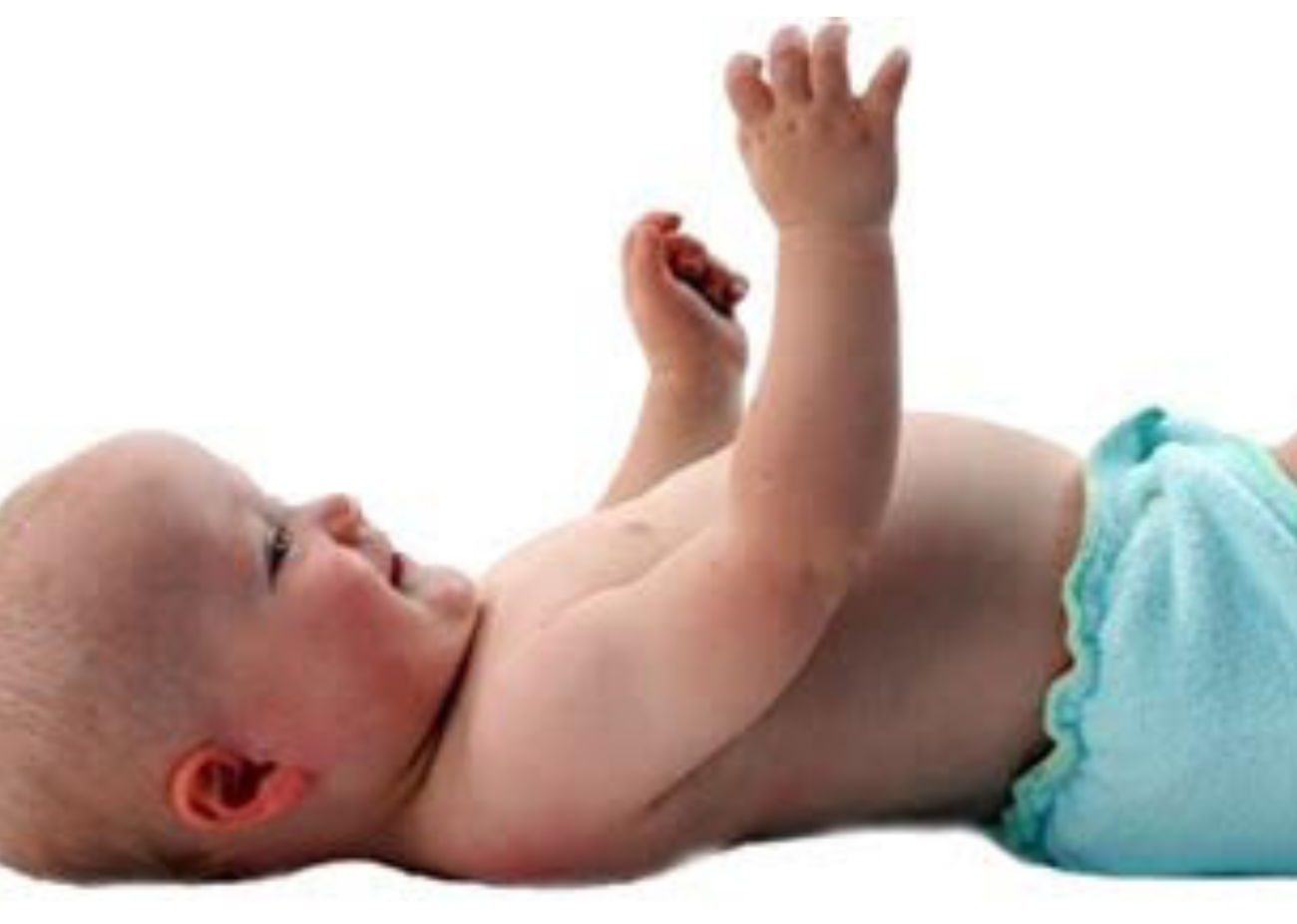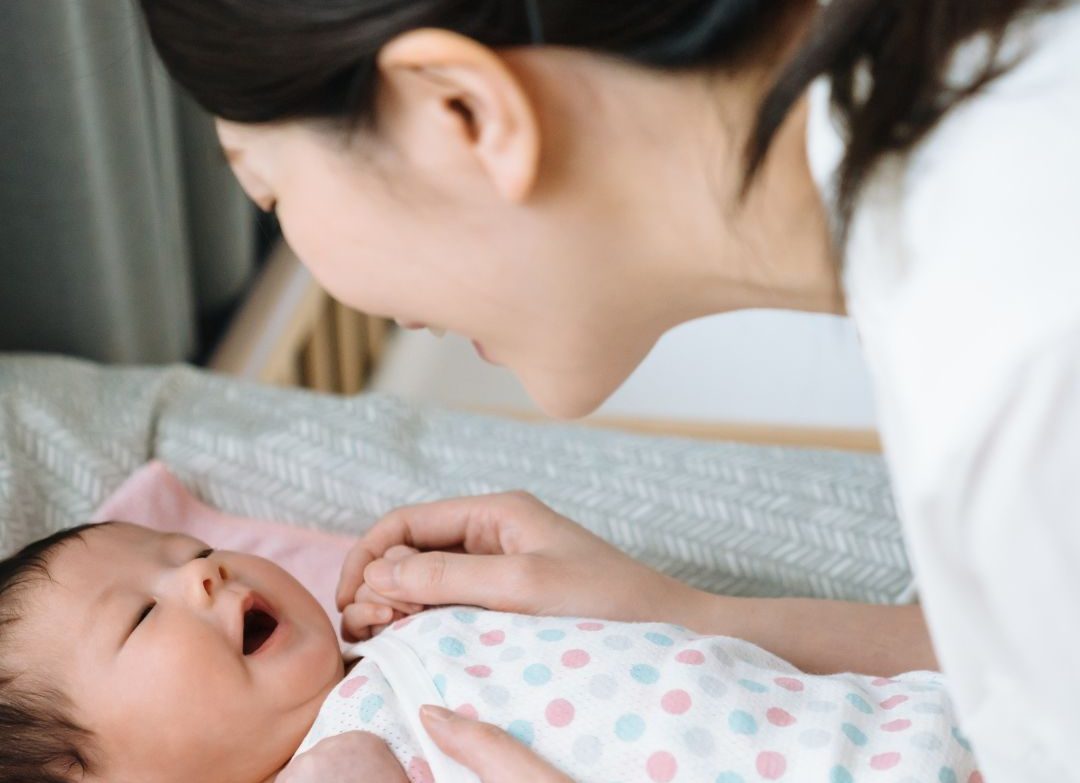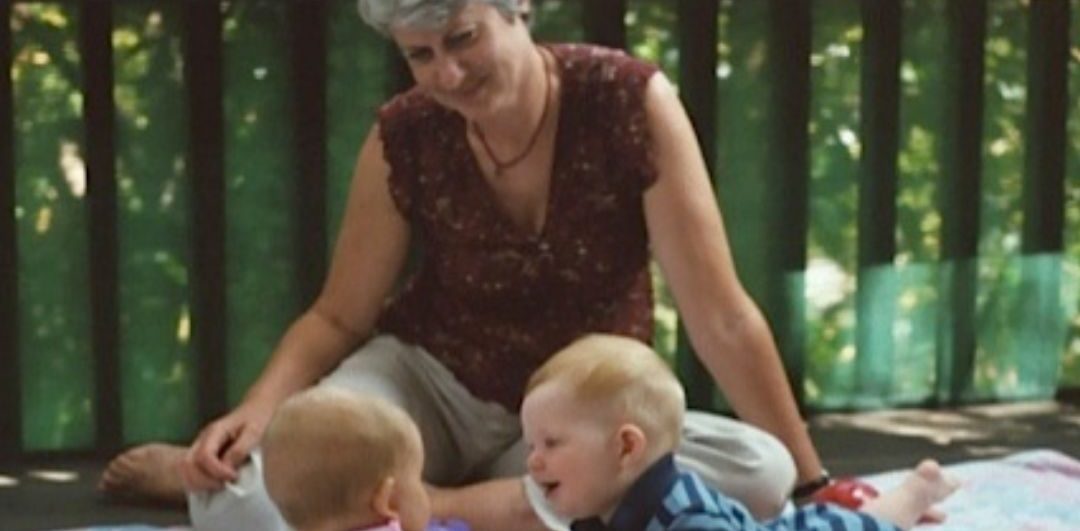When your baby is not being held or cared for, placing them on their back to move freely helps them discover and take control of their body.
“On her back, she has the maximum mobility and support. She is freer to move her arms, legs, and body,
and do what she can do on her own.” –Magda Gerber, Your Self-Confident Baby
How to Do It:
- Whether baby is not yet moving on their own or has learned to crawl, we always put the baby into a “starting position” on their back. This is where babies feel safest and most confident.
- Newborns can be placed on their back in their crib or in a playpen. For babies who are turning to their side or more, create a clean, firm and safe space on the floor where you can lay them down — on the floor itself (which gives great traction) or on a blanket, rug or lambskin.
- Always supporting their neck and head, lay baby down slowly with their bottom touching the ground first, then gently letting the back and eventually the head rest on the ground.
- If they are able to move, they will easily get into their favorite position on their own from this starting point.
Why we do it:
- On their backs, babies can see and hear better, breathe with more ease, don’t feel constrained or tense, and are in the place of the most stability and opportunity. They can also see YOU, their carer.
- Even for babies who can roll over or sit, laying on the back is a starting or resting position, so it allows the baby to decide when and how they want to move next, a way we show respect for what they can already do.
- On their back moving freely, you are giving your baby the chance to independently exercise their primitive reflexes, which may appear abrupt or jerky, but help baby make the adjustment from womb to world. These reflexes are the body’s way of keeping the baby safe and building up the body that they will eventually control.
- Allows baby to build up the complex web of large and small muscles, bones, ligaments and fascia throughout the body that will enable later gross motor skills that are both efficient and graceful. Gross motor milestones — like crawling, sitting up, or walking — are achieved by the development of a many, many smaller movements — what we sometimes call “micro-milestones.” Nature has given your baby a perfect plan for movement development that we can trust will allow your baby to move with strength, efficiency and grace.
- As the baby’s gross motor skills develop, the myelination of the nervous system is allowed to develop naturally and optimally.
- We give the infant plenty of opportunity for free movement and uninterrupted play. Instead of trying to teach babies how to move, we appreciate and admire how babies are moving on their own at this point in time, knowing that the movements they self-initiate keep them safe and on track.
- There is some research suggesting that when these reflexes are “retained” because the baby has not been allowed to move freely, it can lead to things like hypersensitivity, picky eating, poor muscle tone, or poor manual dexterity.
- On their back, a baby can more easily see YOU, their parent or carer, so you can make face to face connections — a building block of their early emotional health. They can also discover their hands and begin to observe the world around them.
Ties to Principles:
- Respect is the basis of the Educaring® Approach.
- Basic trust in the infant to be an initiator, an explorer, and self-learner.
- Freedom to explore and interact with other infants.
Adapted from Dear Parent by Magda Gerber and Your Self- Confident Baby by Magda Gerber
References:
Gerber, M. (2002) Dear Parent: Caring for Infants with Respect (pp. 181)
Gerber, M. (1998) Your Self Confident Baby (pp.23)
Schott, J.M. and Rossner, M.N. (2003). The Grasp and Other Primitive Reflexes. J Neurol Neurosurg Psychiatry (74:558–560)

 Educaring® Practice: Choosing Play Objects
Educaring® Practice: Choosing Play Objects Educaring® Practice: Responding to Crying
Educaring® Practice: Responding to Crying Educaring® Practice: Tell the Baby What You are Going to Do
Educaring® Practice: Tell the Baby What You are Going to Do Educaring® Practice: Wants Nothing Time
Educaring® Practice: Wants Nothing Time